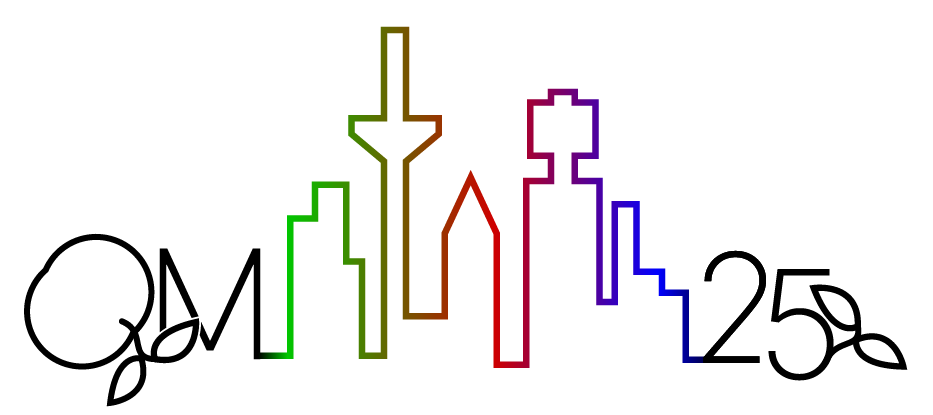Speaker
Description
Transport coefficients play an important role in characterizing hot and dense nuclear matter, such as that created in ultra-relativistic heavy-ion collisions (URHIC). The electric conductivity can be accessed via the electromagnetic (EM) spectral function's low-energy transport peak, which can be measured via thermal dilepton emission. Several facilities including the Schwer-Ionen Synchrotron (SIS), the Relativistic Heavy-Ion Collider (RHIC), and the Large Hadron Collider (LHC) have potential to probe low energy dilepton signals in ongoing and future experiments.
In this contribution, we present our recently published study on the electric conductivity of hot and dense nuclear matter. We implement the vector dominance model (VDM), in which the photon couples to hadronic currents predominantly through the $\rho$ meson. Therefore, hadronic many-body theory is utilized to calculate the $\rho$-meson's self-energy in hot and dense hadronic matter, by dressing its pion cloud with $\pi$-$\rho$, $\pi$-$\sigma$, $\pi$-$K$, N-hole, and $\Delta$-hole loops. Vertex corrections are then introduced to maintain gauge invariance. In particular, we examine the transport peak and electric conductivity along a proposed phase transition line, and under conditions comparable to those expected in future heavy-ion experiments. We compare the transport properties for hadronic matter and a pion gas, in order to examine the individual contributions of various particles to the electric conductivity. In addition, we calculate the transport peak along a proposed phase transition line, and find that the electric conductivity shows a decreasing tendency from high to low collision energies.
| Category | Theory |
|---|
